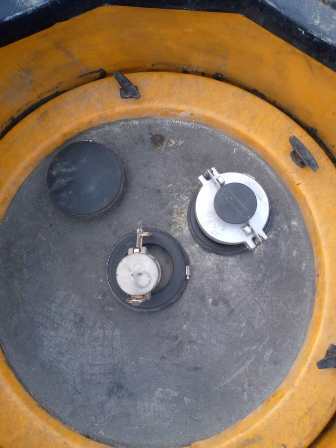Sumps
Sumps are basically containments that provide dry compartments or manhole access to tank-head fittings. They prevent external fluid bodies, majorly water, from gaining access to the tank-head fittings.
Installation of Sumps: are not generic, but specific to manufacturer’s specification.
Types of Sumps
- Turbine sumps: are set above the underground storage tank (UST)
- Dispenser sumps: are set under the dispensers
- Intermediate Sumps: are less common than other sumps. They are set at key points, for accessibility in the piping system.
- Spill buckets: are set above the UST, where the product (fuel) connects to it. They can also be installed within larger sumps as a secondary container.
Long term usage of sumps might cause the following:
- The sump walls to crack, have stains or garbage
- The sump lids to be loose
- The positioning of the sensors or test boots[1] to be distorted
- Attached components like electric wires, fittings , pipes and conduits to crack and leak fuel
Due to the above mentioned reasons, it is safe and cost effective to check the sumps regularly. This ensures that the sump operation is not interrupted, nor its working capacity reduced.
Benefits of using sumps in gas station
- It prevents fuel leakage in UST, submersible pump, dispensers and piping system, by containing it. This reduces environmental contamination.
- Fuel is saved (monetarily) when there is reduction in its leakage.
Safety awareness
- Unauthorized personnel should not be allowed in the working area.
- Personnel must wear their full Personal Protective Equipment (PPE) kit, which includes safety vest, hard hat, Steel-toed boots, and Chemical resistant gloves.
- First-aid kit must be on site.
- Personnel should be aware of safe lifting techniques for heavy items (like the sump steel lids) and trained on methods of handling hazardous chemicals.

cover of the sump skirt
[1] Test boot is a flexible casing (made of rubber with a valve), used to test the space between the inner and outer piping walls for tightness.